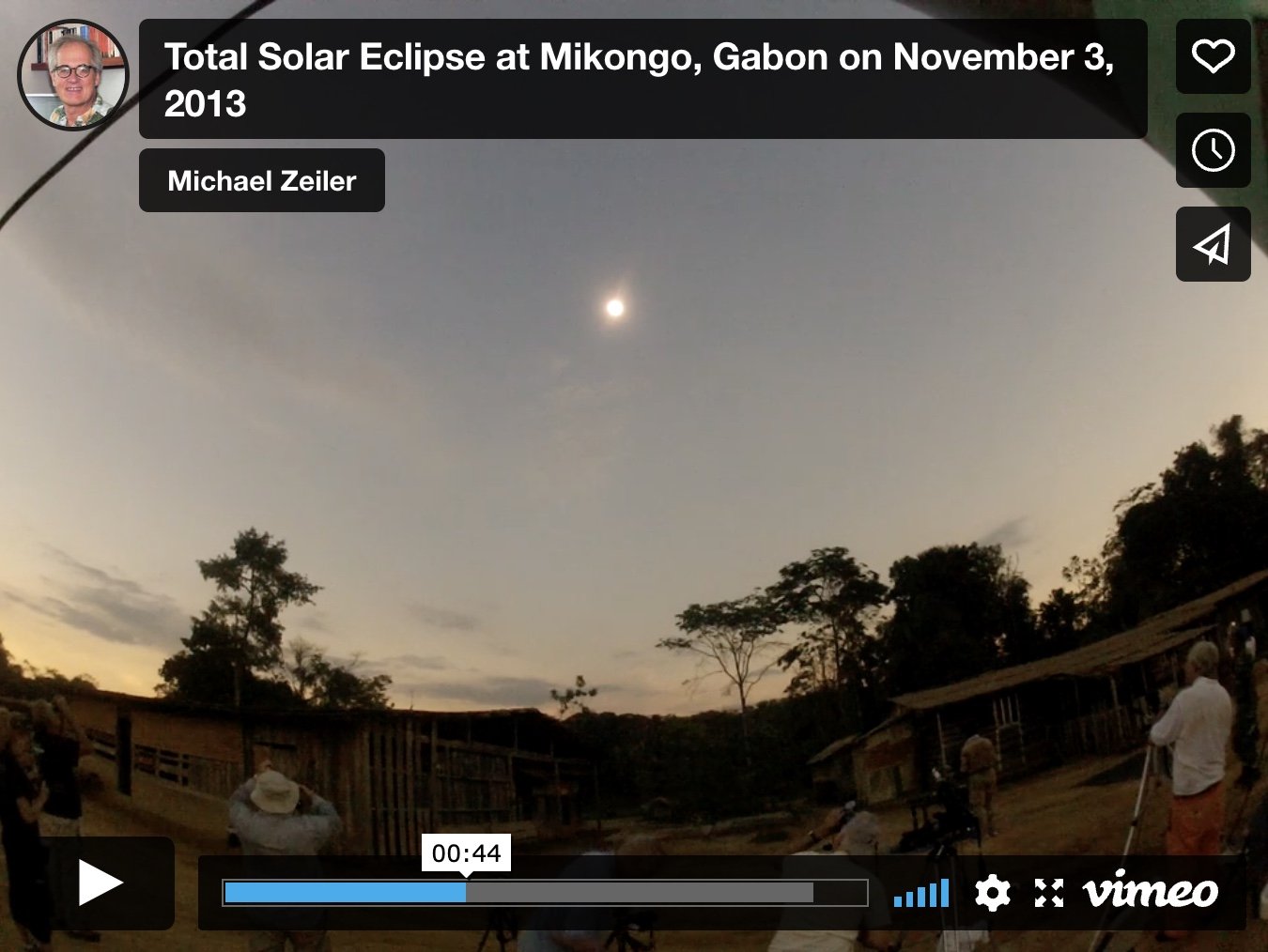The splendor of totality
Beginning of the total solar eclipse with corona surrounded by iridescent clouds. Photographed from a ship in Polynesia during the July 22, 2009 eclipse. © 2009 Denise Kramer, ecilpse-chasers.com.
You cannot completely prepare yourself for the sight of your first total solar eclipse. When totality arrives, you will likely experience several emotions and wonderment at the unspeakable beauty of the corona and the panoply of colors and light. Many people involuntarily scream, gasp, and often cry at this astounding vision. First timers are especially likely to shed a few tears, often followed by sheer exhilaration.
You will be looking straight down the cosmic billiard shot of the Earth, Moon, and Sun lined up perfectly. By celestial coincidence, the Sun and Moon's apparent disks in the sky are nearly the same. This serendipitous fact allows the Sun to be completely covered during eclipse yet also allows us to see the Sun's atmosphere, its corona. The corona is hidden from us all our lives except for the very special moments during a total solar eclipse.

Total solar eclipse of November 2, 2013 at the small village of Mikongo in the equatorial African country of Gabon. This video shows the eclipse expedition of Williams College led by Professor Jay Pasachoff. © 2013 Michael Zeiler
When you look at a total eclipse, you will perceive the blackest black imaginable surrounded by the Sun's ever-changing atmosphere, the corona. The quality of light is truly unique with an amazing show of iridescence, scintillation, and delicate colors.
Another realization that may hit you during totality is that you are watching the solar system in motion. In real-time, you can perceive the relative motions of the Moon around Earth and the Earth around the Sun.
Even for those who have seen it before, a total solar eclipse is an intensely emotional experience. You will feel ecstasy, wonder, and disappointment when it is over. Many people want to immediately discuss plans to see the next one.
A piece of wisdom that many experienced eclipse observers tell those new to totality: do not attempt photography during the precious few minutes of the Sun in total eclipse. Instead, capture the moment with your senses and savor each second of the precious few minutes of totality. What you see will be seared in your mind's eye for the rest of your life. No camera can capture the full range of light, darkness, and colors of the corona and sky. Besides, many people are so awestruck by the spectacle that they are not be able to operate their own phone or camera.
Experienced astrophotographers will make their photographs available online soon after the event. You hope will appreciate these professional photographs, and know that these images, no matter how good, are a pale reflection of what you saw with your very own eyes. You can find certified safe eclipse glasses here.
This outstanding video from a Spanish eclipse chasing group shows the pursuit and ecstasy of catching totality. Even if you can't speak any Spanish, you will get a strong sense of what it is like to successfully see the most amazing sight on Earth. Video courtesy of Oscar Martín Mesonero
“Glorious totality!
There are precious few events in life that leave such an indelible impression that the simple act of recollection can quicken the pulse and increase respiration as vivid memories flood one’s mind. The total eclipse of the Sun is just such an event.
The simple act of standing within the shadow of the Moon affords the rare and unprecedented opportunity to gaze directly at the halo of million-degree plasma surrounding our star. Twisted, tortured, and constrained by the Sun’s enormous magnetic fields, the solar corona is revealed to the naked eye only during the brief seconds when the Moon completely blocks the brilliant disk of the Sun.
The corona’s gossamer crown of pearly light displays an ethereal beauty that transcends both science and nature. It hypnotizes the viewer into an altered state where time seems to stand still. Nevertheless the diamond ring of third contact, signaling the end of totality, appears much too quickly. Hungry eyes search in vain for one last glimpse of the corona hidden by the rapidly expanding glare.
Totality is over. The memory of this fleeting event will be replayed many times in the years to come. But for some people it will not be enough. They will travel to the far corners of the globe at the appointed time and place to witness the grand spectacle again. And again. And again. They are the eclipse chasers.”


